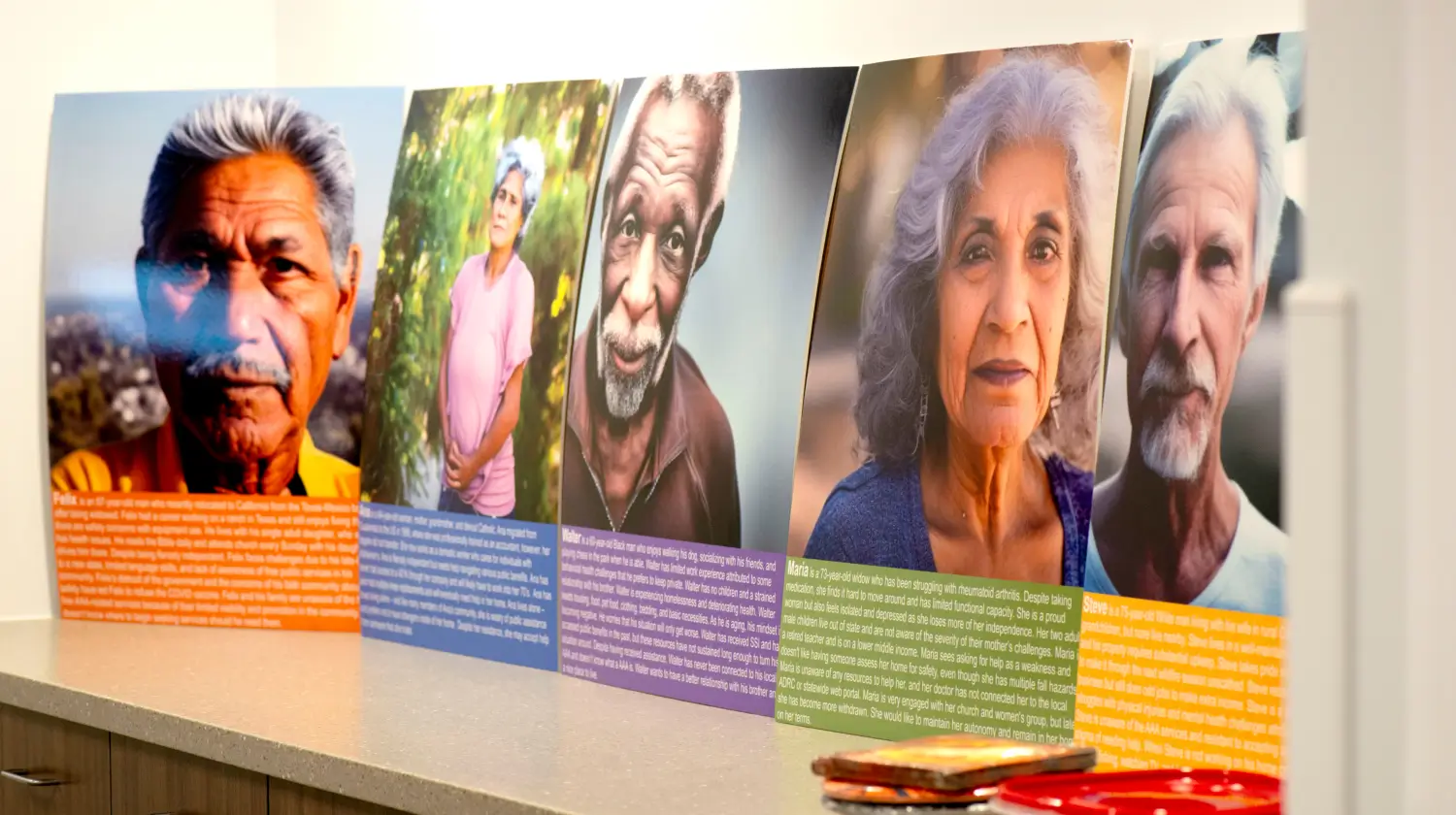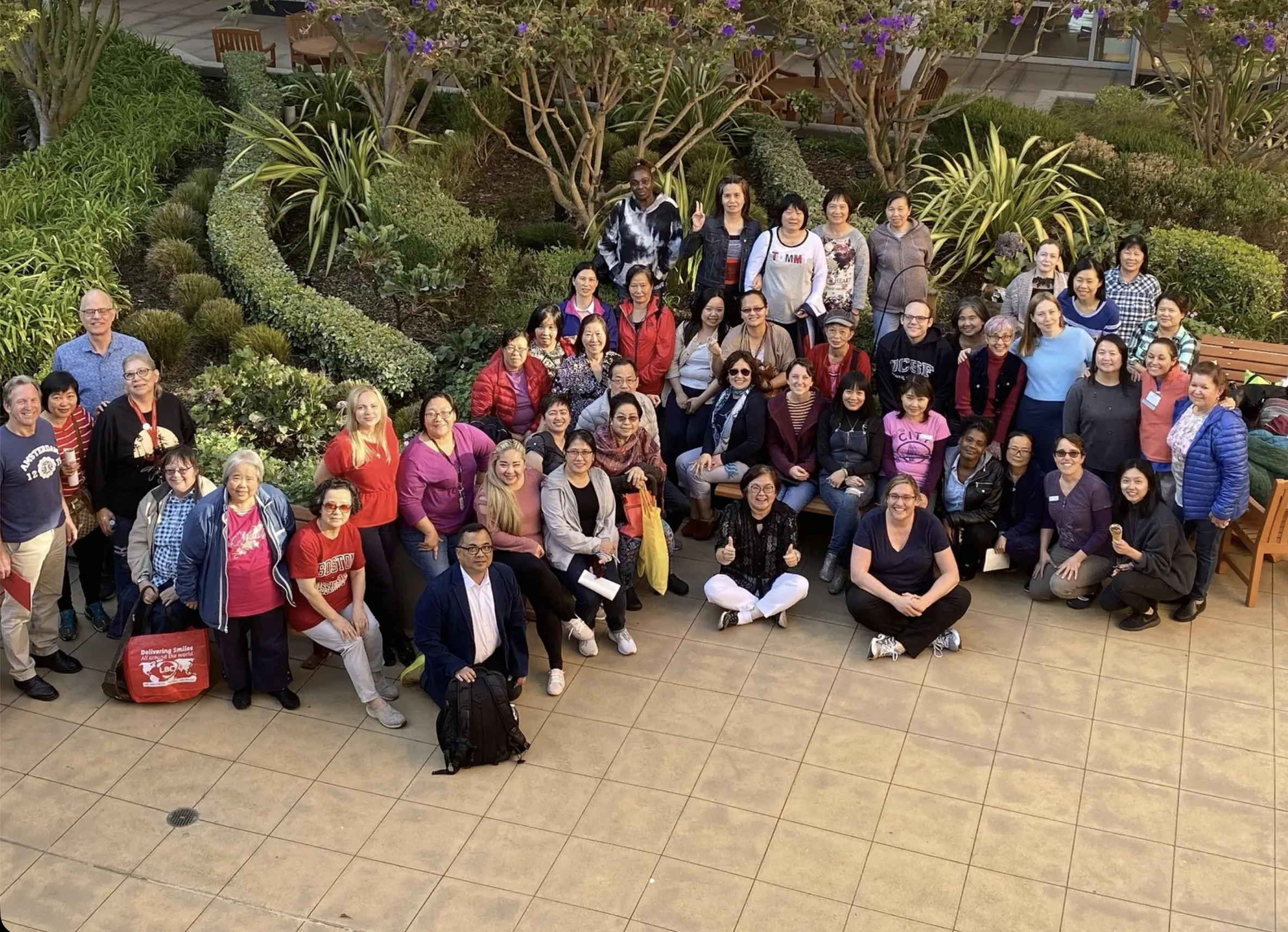
How the California Aging Network is Preparing to Serve a Larger, Older, More Diverse Population

Can one big question change what’s possible for the future of aging across an entire state? If you ask the California Department of Aging and the 33 Area Agencies on Aging that make up the California Aging Network, the answer is yes.
The California Department of Aging (CDA) engaged Collaborative Consulting to think about and plan for a future-ready version of the California Aging Network. For our project – dubbed California 2030 – the California Aging Network refers to CDA plus the 33 Area Agencies for Aging (AAAs).
California 2030 was launched in late 2022 to develop strategies and tactics to ready the California Aging Network for the future. In light of resources and attention devoted to aging and aging issues through the development of the state Master Plan for Aging, the COVID-19 pandemic, and the increasing number of Californians aged 60 years and older, the time had come to recognize the importance of a nearly 50-year old aging network and identify how it can evolve to meet the challenges of a future that looks very different than the past.
- Established a steering committee from both inside and outside the network to bring expertise and experience to decision-making, validate recommendations, and ensure diversity of perspectives.
- Conducted qualitative interviews with 253 stakeholders and subject matter experts inside and outside the California Aging Network and used findings from a community assessment survey of 17,000 area residents.
- Identified and analyzed trends and projections to understand their impact on the future needs of California’s aging population and the future requirements for an effective California Aging Network.
- Interviewed experts from across the United States and conducted research to identify practices that could provide promising approaches and ideas for California.
- Profiled the current state of the 33 California AAAs that produced critical insights to inform the design of a future-ready plan.
- Developed a set of actionable recommendations across nine distinct categories to achieve a future-ready California Aging Network
CDA engaged Collaborative Consulting to help prepare the California Aging Network to address the future needs of California’s larger, older, and more diverse population.
Our goals for this project included:
- Profiling the current state of the California Aging Network and thinking about what a future-ready version of the working should look like.
- Understanding how key external trends are shaping California’s older population and can inform how the California Aging Network positions to meet the future needs of older Californians.
- Identifying, learning from, and applying lessons from how other states address their challenges and opportunities related to aging services.
- Engaging a large number of diverse stakeholders to gain perspectives on how the California Aging Network needs to evolve and ready itself for the future.
- Incorporating insights from a statewide community assessment survey of older adults to identify the needs of older Californians.
- Delivering actionable recommendations to achieve a future-ready California Aging Network
California 2030 was launched with a leading research question: How will the California Aging Network prepare to serve a larger and more diverse population of older Californians in the future?
From the start, we believed this project would benefit from the inclusion of a diverse group of experts in aging, who would share their experiences and ideas. We established a California 2030 Steering Committee that included representatives from CDA and fa broader group of dedicated leaders in aging. The committee was central to our process and instrumental to our success, serving as an advisory body with deep expertise, and providing feedback on deliverables and recommendations throughout the project.
Next, we undertook a multi-faceted research process that gathered internal and external perspectives about the network and the people it serves, trends shaping the future, and inspiring examples of how other states are addressing changes with their aging populations.
- We combined qualitative and quantitative research methods to gain stakeholders’ perspectives on the current and desired future state of the California Aging Network. During this stage of the project, we conducted interviews with 253 individuals from inside and outside the network, and incorporated data from a statewide consumer survey of 17,000 older Californians.
- We complemented these insights by conducting an environmental scan using a common futures thinking methodology for identifying trends and understanding their implications for the California Aging Network and the people it serves. We explored relevant trends in areas such as social, technological, economic, environmental, political, and societal values.
- We also researched promising practices from outside California, showcasing policies, practices, models, standards, and initiatives that have been implemented to address other states’ challenges and opportunities related to aging services.
Our synthesis of the insights and trends from the research phases dovetailed into the development of recommended strategies and tactics the California Aging Network can undertake to better serve older and more diverse Californians in the future. We facilitated monthly multi-stakeholder working session with Steering Committee, and ultimately aligned around the California 2030 recommendations.
Based on the outputs from our year-long engagement, we identified actionable recommendations for the California Aging Network in nine core areas:
- Strategic Planning
- Funding
- Services
- Communications
- Planning and Service Areas & Designations
- Performance
- Data and Information Technology
- Workforce
- Advocacy
Some of the recommendations align with efforts already in development, while others were entirely new. To spark action, each recommendation identifies who within the California Aging Network could lead and/or support activities. In practice, building a future-ready aging network will require ongoing collaboration between the state and the AAAs, with CDA providing the direction and support the AAAs need to build, deliver, and scale the services and programs needed to better serve the state’s aging population over the coming years.
Recommendations from the California 2030 project are informing proposed updates to public policies, the next state plan on aging, and the next strategic plan for CDA. We’re also facilitating a change management effort to help the CDA team implement initiatives in a few priority areas that emerged from California 2030 recommendations.
Visit the California 2030 website to see all of the project deliverables.

